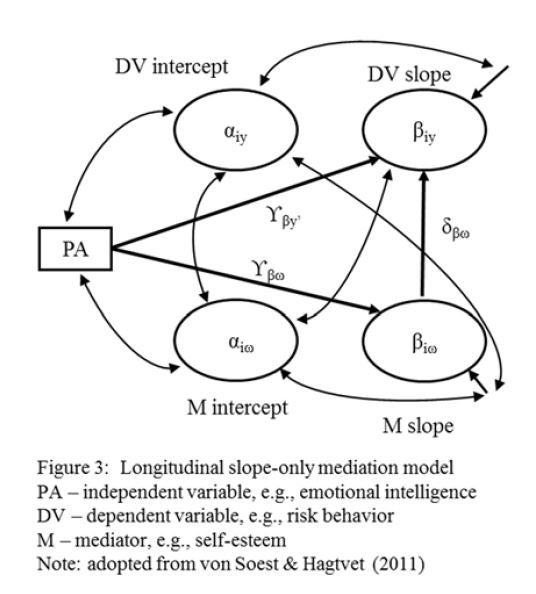Mediation Analyses
The first aim is to investigate how the PA program achieves its effects. Causal paths reflected in the logic/theoretic model will be tested for the PA program that are expected to mediate effects of PA on academic, behavioral and emotional outcomes. A putative mediator variable can represent either time-invariant or time-variant observations or latent constructs. The type of mediator variable will dictate which LGCM is used to analyze its mediator properties longitudinally. Once the LGCM model is identified, various constraints will be imposed on the model to test different potential mediation scenarios.
For example, Figure 3 represents a slope-only model for testing an effect of PA learning (e.g., emotional intelligence measure) on positive behavior (e.g., risk behavior measure) via a mediator (e.g., self-esteem).

Slope only models are also called parallel process models (PPM) (Cheong, MacKinnon, & Khoo, 2003) in that they model the change in a mediator that predicts change in the dependent variable (i.e., DV). Because slope-only models are unable to completely support the temporal order that is necessary for testing causal relationships, PPM analyses will be followed, with Latent Difference Score (LDS) models suggested by Selig & Preacher (2009) and used in other research testing longitudinal mediation (Ferrer & McArdle, 2003; McArdle & Hamagami, 2001). LDS models use value-differences between adjacent observations as a latent construct, thereby providing the opportunity to assess causal order.